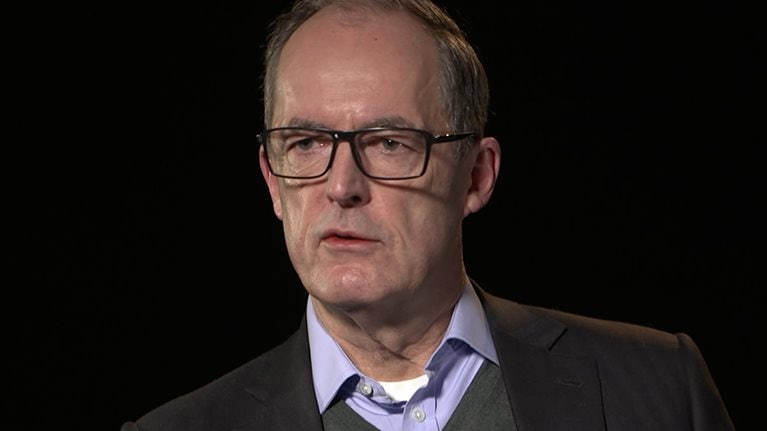A decade ago, Norwegian media group Schibsted made a courageous decision: to offer classifieds—the main revenue source of its newspaper businesses—online for free. The company had already made significant Internet investments but realized that to establish a pan-European digital stronghold it had to raise the stakes. During a presentation to a prospective French partner, Schibsted executives pointed out that existing European classifieds sites had limited traffic. “The market is up for grabs,” they said, “and we intend to get it.”1 Today, more than 80 percent of their earnings come from online classifieds.2
About that same time, the boards of other leading newspapers were also weighing the prospect of a digital future. No doubt, like Schibsted, they even developed and debated hypothetical scenarios in which Internet start-ups siphoned off the lucrative print classified ads the industry called its “rivers of gold.” Maybe these scenarios appeared insufficiently alarming—or maybe they were too dangerous to even entertain. But very few newspapers followed Schibsted’s path.
From the vantage point of 2016, when print media lie shattered by a tsunami of digital disruption, it’s easy to talk about who made the “right” decision and who the “wrong.” Things are far murkier when one is actually in the midst of disruption’s uncertain, oft-hyped early stages. In the 1980s, steel giants famously underestimated the potential of mini-mills. In the 1980s and 1990s, the personal computer put a stop to Digital Equipment Corporation, Wang Laboratories, and other minicomputer makers. More recently, web retailers have disrupted physical ones, and Airbnb and Uber Technologies have disrupted lodging and car travel, respectively. The examples run the gamut from database software to boxed beef.
What they have in common is how often incumbents find themselves on the wrong side of a big trend. No matter how strong their ingoing balance sheets and market share—and sometimes because of those very factors—incumbents can’t seem to hold back the tide. The champions of disruption are far more often the attackers than the established incumbent. The good news for incumbents is that many industries are still in the early days of digital disruption. Print media, travel, and lodging provide valuable illustrations of the path increasingly more will follow. For most, it’s early enough to respond. (For a quick guide to assessing your organization's position in the digital disruption journey, see "Digital disruption: A discussion guide for incumbents." [PDF-7.6MB])
What’s the secret of those incumbents that do survive—and sometimes even thrive? One aspect surely relates to the ability to recognize and overcome the typical pattern of response (or lack thereof) that characterizes companies in the incumbent’s position. This most often requires acuity of foresight3 and a willingness to respond boldly before it’s too late, which usually means acting before it is obvious you have to do so. As Reed Hastings, the CEO of Netflix, pointed out (right as his company was making the leap from DVDs to streaming), most successful organizations fail to look for new things their customers want because they’re afraid to hurt their core businesses. Clayton Christensen called this phenomenon the innovator’s dilemma. Hastings simply said, “Companies rarely die from moving too fast, and they frequently die from moving too slowly.”4
We are all great strategists in hindsight. The question is what to do when you are in the middle of it all, under the real-world constraints and pressures of running a large, modern company. This article looks at the four stages of disruption from an incumbent’s perspective, the barriers to overcome, and the choices and responses needed at each stage.
Where you are and what you need
It may help to view these stages on an S-curve (exhibit). At first, young companies struggle with uncertainty but are agile and willing to experiment. At this time, companies prize learning and optionality and work toward creating value based on the expectation of future earnings. The new model then needs to reach some critical mass to become a going concern. As they mature—that is, become incumbents—mind-sets and realities change. The established companies lock in routines and processes. They iron out and standardize variability amid growing organizational complexity. In the quest for efficiency, they weed out strategic options and reward executives for steady results. The measure of success is now delivery of consistent, growing cash flows in the here and now. The option-rich expectancy of future gain is replaced by the treadmill of continually escalating performance expectations.

In a disruption, the company heading toward the top of the old S-curve confronts a new business model at the bottom of a new S-curve. The circle of creative destruction is renewed, but this time the shoe is on the other foot. Two primary challenges emerge. The first is to recognize the new S-curve, which starts with a small slope, and often-unimpressive profitability, and at first does not demand attention. After all, most companies have shown they are very good at dealing with obvious emergencies, rapidly corralling resources and acting decisively. But they struggle to deal with the slow, quiet rise of an uncertain threat that does not announce itself. Second, the same factors that help companies operate strongly toward the top of an S-curve often hinder them at the bottom of a new one. Because different modes of operation are required, it’s hard to do the right thing—even when you think you know what the right thing might be.
This simplified model, of a new S-curve crashing slow motion into an old one, gives us a way to look at the problem from the incumbent’s perspective, and to appreciate the actual challenges each moment presents along the way. In the first stage, the new S-curve is not yet a curve at all. In the second, the new business model gets validated, but its impact is not forceful enough to fundamentally bend the performance trajectory of the incumbent. In the third stage, however, the new model gains a critical mass and its impact is clearly felt. In the fourth, the new model becomes the new normal as it reaches its own maturity.
Let’s step through these stages in sequence and see what is going on.
Would you like to learn more about our Strategy & Corporate Finance Practice?
Stage one: Signals amidst the noise
In the late 1990s, PolyGram was one of the world’s top record labels, with a roster boasting Bob Marley, U2, and top classical artists. But, in 1998, Cornelis Boonstra, CEO of PolyGram’s Dutch parent, Koninklijke Philips, flew to New York, met with Goldman Sachs, and arranged to sell PolyGram to Seagram for $10.6 billion. Why? Because Boonstra had come across research showing that consumers were using the new recordable CD-ROM technology (which Philips coinvented) largely for one purpose: to copy music. In hindsight, this is a good example of how, in the early stages of disruption, demand begins to “purify” and lose the distortions imposed on it by businesses.5
The MP3 format had barely been invented, Napster was a mere gleam in Sean Parker’s eye, and PolyGram was riding at the top of its S-curve—but Boonstra detected the first signs of transformational change and decided to act swiftly and decisively. Within a decade, compact-disc and DVD sales in the United States dropped by more than 80 percent. Similarly, Telecom New Zealand foresaw the deteriorating economics of its Yellow Pages business and sold its directories business in 2007 for $2.2 billion (a nine-time revenue multiple)6 while numerous other telecom companies held on until the businesses were nearly worthless.7
The newspaper industry had no shortage of similar signals. As early as 1964, media theorist Marshall McLuhan observed that the industry’s reliance on classified ads and stock-market quotes made it vulnerable: “Should an alternative source of easy access to such diverse daily information be found, the press will fold.” The rise of the Internet created just such a source, and start-ups such as eBay opened a new way for people to list goods for sale without the use of newspaper ads. Schibsted was one of the earliest media companies to both anticipate the threat and act on the opportunity. As early as 1999, the company became convinced that “The Internet is made for classifieds, and classifieds are made for the Internet.”8
It’s not surprising that most others publishers didn’t react. At this early stage of disruption, incumbents feel barely any impact on their core businesses except in the distant periphery. In short, they don’t “need” to act. It takes rare acuity to make a preemptive move, likely in the face of conflicting demands from stakeholders. What’s more, it can be difficult to work out which trends to ignore and which to react to.
Gaining sharper insight, and escaping the myopia of this first stage, requires incumbents to challenge their own “story” and to disrupt long-standing (and sometimes implicit) beliefs about how to make money in a given industry. As our colleagues put it in a recent article, “These governing beliefs reflect widely shared notions about customer preferences, the role of technology, regulation, cost drivers, and the basis of competition and differentiation. They are often considered inviolable—until someone comes along to violate them.”9
The process of reframing these governing beliefs involves identifying an industry’s foremost notion about value creation and then turning it on its head to find new forms and mechanisms for creating value.
Stage two: Change takes hold
The trend is now clear. The core technological and economic drivers have been validated. At this point, it’s essential for established companies to commit to nurturing new initiatives so that they can establish footholds in the new sphere. More important, they need to ensure that new ventures have autonomy from the core business, even if the goals of the two operations conflict. The idea is to act before one has to.
But with disruption’s impact still not big enough to dampen earnings momentum, motivation is often missing. Even as online classifieds for cars and real estate began to take off and Craigslist gained momentum, most newspaper publishers lacked a sense of urgency because their own market share remained largely unaffected. And it’s not like the new players were making millions (yet). There was no performance envy.
But Schibsted did find the necessary motivation. “When the dot-com bubble burst, we continued to invest, in spite of the fact that we didn’t know how we were going to make money online,” recalls then-CEO Kjell Aamot. “We also allowed the new products to compete with the old products.”10 Offering free online classifieds directly cannibalized its newspaper business, but Schibsted was willing to take the risk. The company didn’t just act; it acted radically.
Now, let’s openly acknowledge how hard it is for a company’s leaders to commit to supporting experimental ventures when the business is climbing the S-curve. When Netflix disrupted itself in 2011 by shifting focus from DVDs to streaming, its share price dropped by 80 percent. Few boards and investors can handle that kind of pain when the near-term need is debatable. The vague longer-term threat just doesn’t seem as dangerous as the immediate hardship. After all, incumbents have existing revenue streams to protect—start-ups only have upside to capture. Additionally, management teams are more comfortable developing strategies for businesses they know how to operate, and are naturally reluctant to enter a new game with rules they don’t understand.
The upshot: most incumbents dabble, making small investments that won’t flatten their current S-curve and guard against cannibalization. Usually, they focus too heavily on finding synergies (always looking for efficiency) rather than fostering radical experimentation. The illusion that this dabbling is getting you into the game is all too tempting to believe. Many newspapers built online add-ons to their classified businesses, but few were willing to risk cannibalizing the traditional revenue streams, which at this point were still far bigger and more profitable. And remember, at this time, Schibsted had not yet been rewarded for its early action: its results looked pretty similar to its peers.
In time, of course, bolder action becomes necessary, and executives must commit to nurturing potentially dilutive and small next-horizon businesses in a pipeline of initiatives. Managing such a portfolio requires high tolerance for ambiguity, and it requires executives to adapt to shifting conditions, both inside and outside the company, even as the aspiration to deliver favorable outcomes for shareholders remains constant.11 The difficulty is the tendency to protect the core at the expense of the periphery. Not only are there strong, short-term financial incentives to protect the core, but it’s also often painful to shift focus from core businesses in which one has, understandably enough, an emotional as well as a financial investment.
No small part of the challenge is to accept that the previous status quo is no longer the baseline. Grocery retailer Aldi has disrupted numerous incumbents globally with its low-price model. Aldi’s future success was visible while Aldi was still nascent in the market. Yet many incumbent supermarkets chose to avoid the near-term pain of sharpening entry price points and improving their private-label brands. In hindsight, those moves would have been highly net-present-value positive with respect to avoided loss—as Aldi has continued its strong growth across three continents.
Stage three: The inevitable transformation
By now, the future is pounding on the door. The new model has proved superior to the old, at least for some critical mass of adopters, and the industry is in motion toward it. At this stage of disruption, to accelerate its own transformation, the incumbent’s challenge lies in aggressively shifting resources to the new self-competing ventures it nurtured in stage two. Think of it as treating new businesses like venture-capital investments that only pay off if they scale rapidly, while the old ones are subject to a private-equity-style workout.
Making this tough shift requires surmounting the inertia that can afflict companies even in the best of times.12 In fact, our experience suggests stage three is the hardest one for incumbents to navigate. As company performance starts to suffer, tightening up budgets, established companies naturally tend to cut back even further on peripheral activities while focusing on the core. The top decision makers, who usually come from the biggest business centers, resist having their still-profitable (though more sluggishly growing) domains starved of resources in favor of unproven upstarts. As a result, leadership often under invests in new initiatives, even as it imposes high performance hurdles on them. Legacy businesses continue to receive the lion’s share of resources instead. By this time, the very forces causing pressure in the core make the business even less willing and able to address those forces. The reflex to conserve resources kicks in just when you most need to aggressively reallocate and invest.
Boards play a significant role in this as well. Far too often, boards are unwilling (or unable) to change their view of baseline performance, further exacerbating the problem. Often a board’s (understandable) reaction to reduced performance is to push management even harder to achieve ambitious goals within the current model, ignoring the need for a more fundamental change. This only worsens problems in the future.
Further complicating matters, incumbents with initially strong positions can take false comfort at this stage, because the weaker players in the industry get hit hardest first. The narrative “it is not happening to us” is all too tempting to believe. The key is to monitor closely the underlying drivers, not just the hindsight of financial outcomes. As the tale goes, “I don’t have to outrun the bear . . . I just have to outrun you.” Except when it comes to disruption, that strategy merely buys time. If the bear keeps running, it will get to you, too.
The typical traditional newspaper operator, likewise, wasn’t blind to a shift taking place, but it rarely managed to mount a response that was sufficiently aggressive. One notable exception was former digital laggard Axel Springer. The German media company was “a mere Internet midget,” according to Financial Times Deutschland, until it leapt into action in 2005. It went on a shopping spree, acquiring 67 digital properties and launching 90 initiatives of its own by 2013.13 Like Schibsted, it saw the value pools moving to online classifieds and made the leap. The lesson is that incumbents can win even with a late start, provided that they throw themselves in wholly. Today, digital media contributes 70 percent of Axel Springer’s earnings before interest, taxes, depreciation, and amortization. The core has become the periphery.
To generate the acceleration needed at this stage of the game, incumbents must embark on a courageous and unremitting reallocation of resources from the old to the new model—and show a willingness to run new businesses differently (and often separately) from the old ones. Perhaps nothing underlines this point more than Axel Springer’s 2013 divestment of some of its strongest legacy print-media products, which accounted for about 15 percent of its sales, to Germany’s number-three print-media player, Funke Mediengruppe. These products, such as the Berliner Morgenpost, owned by Axel Springer since 1959, were previously a core part of the corporate DNA and emblems of its journalistic culture. But no more. They realized that the future value of the business was not just about the continuation of today’s earnings but rather relied on the creation of a new economic engine.
When incumbents lack the in-house capability to build new businesses, they must look to acquire them instead. Here the challenge is to time acquisitions somewhere between where the business model is proved but valuations have yet to become too high—all while making sure the incumbent is a “natural best owner” of the new businesses it acquires. Examples of this approach in the financial sector include BBVA’s acquisition of Simple and Capital One’s acquisition of the design firm Adaptive Path.

Strategy in a digital age
Our series on developing corporate and business-unit strategies in a digitally disrupted world.
Stage four: Adapting to the new normal
In this late stage, the disruption has reached a point when companies have no choice but to accept reality: the industry has fundamentally changed. For incumbents, their cost base isn’t in line with the new (likely much shallower) profit pools, their earnings are caving in, and they find themselves poorly positioned to take a strong market position.
This is where print media is now. The classifieds’ “rivers of gold” have dried up, making survival the first priority, and sustainability and growth the second. In 2013, the CEO of Australia media company Fairfax Media told the International News Media Association World Congress, “We know that at some time in the future, we will be predominantly digital or digital-only in our metropolitan markets.”14 True, some legacy mastheads have created powerful online news properties with high traffic, but display advertising and paywalls alone are for the most part not enough to generate a thriving revenue line, and social aggregation sites are continuing to drive unbundling. Typical media firms have had to undertake the multiple painful waves of restructuring and consolidation that may be needed while they seed growth and look for ways to monetize their brands.
For the incumbents who, like Axel Springer and Schibsted, have made the leap, the adaptation phase brings new challenges. Having become majority digital businesses, they’re fully exposed to the volatility and pace that comes with the territory. That is, their adaptation response is less a one-time event than a process of continual self-disruption. Think of Facebook upending its business model to go “mobile first.”15 You can’t be satisfied with the first pivot—you have to be prepared to keep doing it.
In some cases, incumbents’ capabilities are so highly tied to the old business model that rebirth through restructuring is unlikely to work, and an exit is the best way to preserve value. Eastman Kodak Company, for example, may have been better off leaving the photography business much faster, because its numerous strategies all failed to save it. When a business is built on a legacy technology that is categorically different from the new standard, even perfect foresight of the demise of film or CDs would not have solved the core problem that the digital replacement is fundamentally less profitable.
The simple fact is that new profit pools may not be as deep as prior ones (as many newspaper publishers have come to believe). The challenge is to adapt and structurally realign cost bases to the new reality of profit pools, and accept that the “new normal” likely includes far fewer “rivers of gold.”
The reality is, most industries are still in stages one, two, and three. That’s why the early experiences of media, music, and travel companies can prove so valuable. These first industries to transition to a digital reality highlight the social and human challenges that by their nature apply to companies in most every industry and geography.
(For a quick guide to assessing your organization's position in the digital disruption journey, see "Digital disruption: A discussion guide for incumbents." [PDF-7.6MB])


